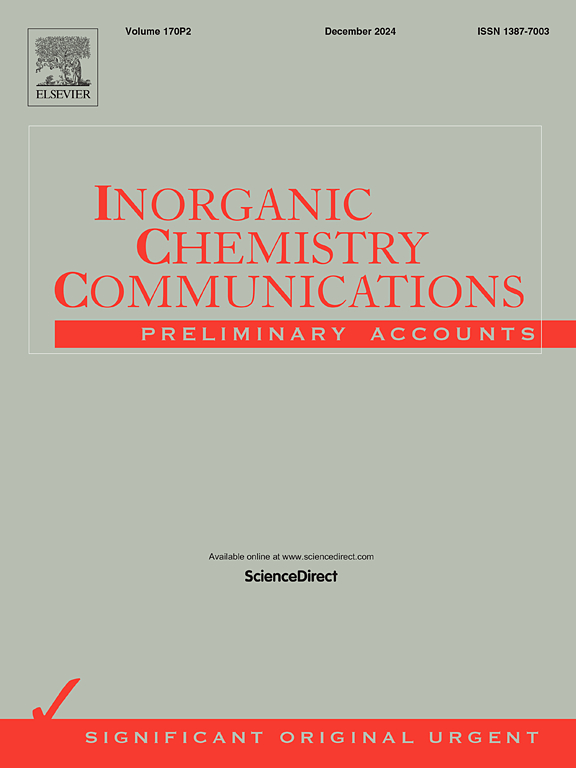取代基位置对有机磷类有机化合物蓝光发射的影响
IF 4.4
3区 化学
Q1 CHEMISTRY, INORGANIC & NUCLEAR
引用次数: 0
摘要
蓝色发光材料对于oled的商业化至关重要,特别是在黑暗显示应用中。然而,对蓝光发射与材料结构之间的关系还缺乏全面的了解。在这项研究中,我们采用一步甲基化法合成了三种具有蓝光发射的有机磷酸盐。研究了分子结构与发光的关系,发现苯环上甲基的位置引入了不同程度的位阻,从而影响了化合物的空间排列和能级分布。这项研究为未来oled的蓝色发光材料的发展奠定了重要的基础,并促进了有机磷阳离子盐的商业化。此外,甲基化有机磷盐的位置异构化可以实现立体控制的蓝色排放,为贵金属基系统提供了一种低成本的替代方案。本文章由计算机程序翻译,如有差异,请以英文原文为准。

Substituent position effects on blue light emission of organophosphonium organic compounds for potential OLED applications
Blue light-emitting materials are crucial for the commercialization of OLEDs, especially in dark display applications. However, a comprehensive understanding of the relationship between blue light emission and material structure remains lacking. In this study, we synthesized three organic phosphonium salts with blue light emissions using a one-step methylation method. The correlation between molecular structure and light emission was investigated, revealing that the position of the methyl group on the benzene ring introduces varying degrees of steric hindrance, which in turn affects the spatial arrangement and energy level distribution of the compounds. This research paves a significant development in blue light-emitting materials for future OLEDs and facilitates the commercialization of organic phosphonium cationic salts. Moreover, the usage of the position isomerization of methylated organophosphorus salts can achieve stereoscopic controlled blue emissions, providing a low-cost alternative to precious metal-based systems.
求助全文
通过发布文献求助,成功后即可免费获取论文全文。
去求助
来源期刊

Inorganic Chemistry Communications
化学-无机化学与核化学
CiteScore
5.50
自引率
7.90%
发文量
1013
审稿时长
53 days
期刊介绍:
Launched in January 1998, Inorganic Chemistry Communications is an international journal dedicated to the rapid publication of short communications in the major areas of inorganic, organometallic and supramolecular chemistry. Topics include synthetic and reaction chemistry, kinetics and mechanisms of reactions, bioinorganic chemistry, photochemistry and the use of metal and organometallic compounds in stoichiometric and catalytic synthesis or organic compounds.
 求助内容:
求助内容: 应助结果提醒方式:
应助结果提醒方式:


